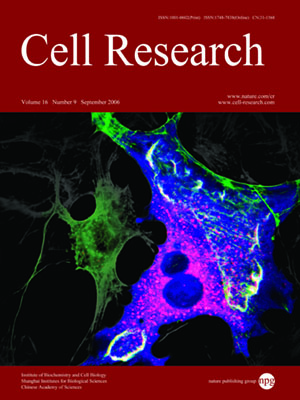
Volume 16, No 9, Sep 2006
ISSN: 1001-0602
EISSN: 1748-7838 2018
impact factor 17.848*
(Clarivate Analytics, 2019)
Volume 16 Issue 9, September 2006: 771-779
ORIGINAL ARTICLES
Xenopus Tbx6 mediates posterior patterning via activation of Wnt and FGF signalling
Xin Lou, Panfeng Fang, Shuangwei Li, Rui-Ying Hu, Klaus-Michael Kuerner, Herbert Steinbeisser,Xiaoyan Ding
1Laboratory of Molecular Cell Biology, Institute of Biochemistry and Cell Biology, 2Shanghai Institutes for Biological Sciences,
Chinese Academy of Sciences, Graduate School of the Chinese Academy of Sciences, 320 Yue Yang Road, Shanghai 200031, China;
3Institute of Human Genetics, University of Heidelberg, Im Neuenheimer Feld 366, Heidelberg 69120, Germany
Correspondence: Xiaoyan Ding(xyding@sunm.shcnc.ac.cn)
In vertebrates, the patterning of anterior-posterior (AP) axis is a fundamental process during embryogenesis. Wnt and FGF signalling pathways play important roles in regulating the patterning of embryo AP axis. Mouse Tbx6 encodes a transcription factor that has been demonstrated to be involved in the specification of the posterior tissue in mouse embryonic body. Here, we prove that morpholino-induced knockdown of XTbx6 impairs posterior development, indicating the requirement of XTbx6 in this process. Meanwhile, gain of XTbx6 function is sufficient to induce ectopic posterior structures in Xenopus embryos. Furthermore, XTbx6 activates the expression of Xwnt8 and FGF8, which are two mediators of posterior development, suggesting a mechanism by which XTbx6 modulates posterior patterning via Wnt and FGF signalling pathway activation.
Cell Research (2006) 16:771-779. doi: 10.1038/sj.cr.7310093; published online 5 Sep 2006
FULL TEXT | PDF
Browse 2233


